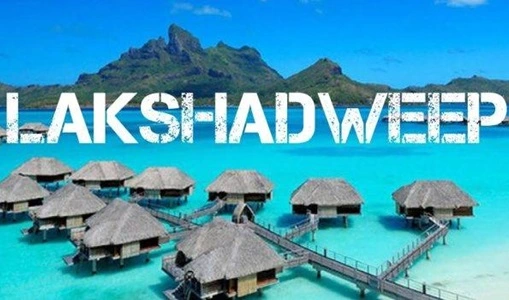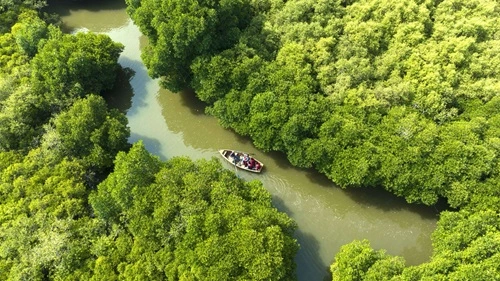Have you ever wondered what mysteries lie beneath the turquoise waters and pristine shores of Lakshadweep? More than just stunning beauty, this group of islands in the Arabian Sea holds in store much more to discover. From unique marine biodiversity to a history immersed in culture, here are 12 fascinating facts about Lakshadweep that make it a paradise to explore.

1. Not Always Called as Lakshadweep
Lakshadweep was not always known by this name. Initially, they were referred to as the ‘Laccadive Islands,’ and their name was derived from the Sanskrit word ‘Lakshadweepa,’ meaning a hundred thousand islands.’ Although this was a poetic exaggeration, the actual number of islands is only 36. It was finally coined officially as Lakshadweep in 1956 when it was declared a Union Territory.
2. The Smallest Union Territory of India
Lakshadweep is one of the smallest Union Territories in India, spread over a mere 32 square kilometers. This tiny cluster of 36 islands and atolls boasts breathtaking diversity in landscapes as well as cultures.
3. Home to the Only Coral Atolls
Lakshadweep is the only place in India where coral atolls are present. These coral islands are formed due to the skeletal remains of marine organisms, so Lakshadweep is heaven for vibrant coral reefs and lagoons. This makes it a prime destination for underwater activities such as snorkeling and diving.
4. Marine Biodiversity Hotspot
Lakshadweep waters comprise one of the most biodiverse marine ecosystems in the world. With about 600 fish species, 78 coral species, and 82 seaweed types, the archipelago presents a marine wonderland for ocean lovers. You could even catch a glimpse of sea turtles, dolphins, and manta rays on a dive.͏͏͏
5. Permit Required to Visit
Any tourist who intends to visit Lakshadweep must obtain a valid permit. Both Indians and foreign nationals need entry permits to the island, which falls under the purview of the Lakshadweep, Minicoy, and Amindivi Islands (Restriction on Entry and Residence) Rules of 1967. This is to ensure that the local flora and fauna, as well as the natives, are protected.
6. Lakshadweep to Maldives
Some of the southernmost islands in Lakshadweep, especially Minicoy, are even culturally related to the Maldives. In fact, the language spoken by the locals on the island of Minicoy is Mahl, which is the same language used by the Maldivian population. Meanwhile, the islands of northern and central Lakshadweep have strong ties with Kerala. Here, Malayalam prevails as the predominant spoken language.͏
͏7. Only 10 Islands are Inhabited
Of the 36 islands constituting Lakshadweep, only 10 are occupied. Some of them are Kavaratti, Agatti, Minicoy, and Andrott, among others. The rest are too small, contain no freshwater, or are nature reserves. That limited habitation is what helps in preserving the natural beauty of the islands.
8. Secrets Under Water
Lakshadweep is often famous as the land of wrecks, mainly in its northern reefs and the island of Minicoy. Though officially no treasure has been found, those wrecks make one recall pirate stories and treasures that may have been lost somewhere, making those islands mysterious. The underwater relics continue to attract explorers or divers hoping to uncover remnants of the past.
9. The Haven for Birds
Pitti Island is one of the uninhabited islands in Lakshadweep and it happens to be a bird sanctuary. This island is a breeding ground for several species of seabirds and is a haven for bird watchers and nature lovers. Pitti is particularly famous for its large population of terns and other migratory birds.
10. Boat Racing Events
Boat racing is one of the most popular events at Miniсоy Island, in fact, it is the main attraction at the National Miniсоy Festival. It takes place between December and January and features the Jahadhoni boats. Highly skilled oarsmen from different districts of Lаkshаdweep partake in these races, which creates an exhilarating experience for the people living here as well as the tourists.
11. Balancing Cultural Vital Harmony with Matrilineality
Lakshadweep is known for its natural splendor, but it is also rich in the cultural side. Most of the people are Muslims, and unlike India, Lakshadweep has a matrilineal system where property and lineage trace back to the mother. The social structure, though unique, peacefully coexists with the island’s Islamic traditions.
12. The Coral Castles of Lakshadweep.
The coral formations here can go as tall as palm trees and form spectacular underwater castles comparable to the Great Barrier Reef. Hundreds of marine species find shelter in these colorful coral structures, making the diving experience an unforgettable one. No wonder Lakshadweep is considered a paradise for the marine lovers.
Conclusion
Lakshadweep is one of those places whose beauty and mystique are rivaled only by its fascinating history and culture. Experiences are aplenty in the form of coral castles, underwater activities, coral atolls, boat races, and rich biodiversity on every island.



